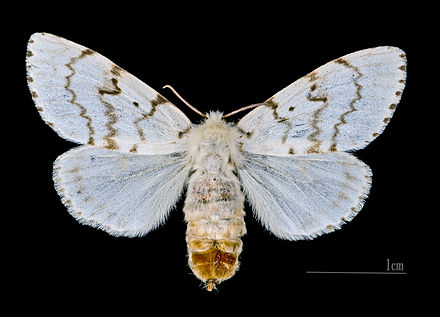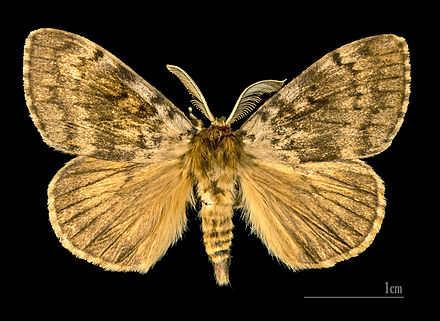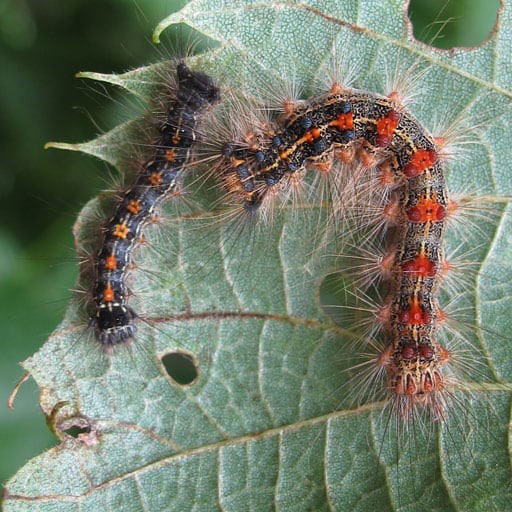How Do You Get Rid of Gypsy Moth Caterpillars? You Have to Eradicate Them When They’re Young.
About The Gypsy Moth Caterpillar
The European gypsy moth is native to temperate forests in western Europe. It was introduced to Canada in 1912.
The larvae live on a variety of deciduous and coniferous trees and can cause severe damage in years of mass reproduction. Due to these features, the gypsy moth is listed among the world’s 100 most invasive alien species.
How It Multiplies
The population of gypsy moths is cyclical, with large outbreaks every 8 years or so. The last serious outbreak hit Ontario in the early 2000s. Usually disease and predators help control the population. However, when the weather conditions are right, those diseases and predators fail to control the caterpillar and huge outbreak can occur.
In May, gypsy moth caterpillars are only about one centimeter in length, clumping together on a tree near where their mother laid the egg mass the previous year. Once they start to grow, they develop a distinct pattern of blue and red dots down their back and grow large tufts of hairs around their body.
A caterpillar can eat about one square meter of leaves as it grows from a tiny new caterpillar to a large adult caterpillar that’s ready to transform to an adult moth.
Once the caterpillars get big their eating becomes frenzied. They eat so much that their excrement, falls from above. The sound it makes hitting the ground has been compared to the pitter-patter of rain drops.
Food Sources
While the Gypsy moth really likes oak, birch, aspen and poplar. It isn’t terribly fussy about what it eats and will quickly move on softwood species such as white pine and balsam fir and blue spruce. Once the trees are bare of foliage, it will move on to ground based plants and bushes.
Effect on Your Garden
The good news is that if your trees are healthy they will probably survive this infestation. The bad news is that your trees will be more or less bare for most of the summer, which can seriously impact your enjoyment of your garden.


Controlling The Gypsy Moth
There are ways to combat the larvae. Sticky traps can be wrapped around the trunk of the trees to catch the small caterpillars. They can also be picked off of trees and dropped into a bucket of soapy water. However, you must be careful when removing the caterpillars because the little hairs on the caterpillars cause a skin rash in just about everybody that comes in contact with them.

The time to control these insects is when they are caterpillars.
There are chemical controls available but the must be applied by a licensed technician. However, if you need help you shouldn’t wait until the caterpillars turn to moths because there is little that can be done at this point. The damage to your garden has been done.
As you can see on the video (left) we have access to professional grade tools and chemicals that can really wipe out these caterpillar problems. We have already eradicated these pests in several gardens in the Alliston / New Tecumseth area.
If your garden is being ravaged, give us a call at 416-993-0987. We always give a Free, No Obligation Consultation, and quote.
Professional Strength Solutions
We are a professional pest control company. We can usually take care of your ant problem in one or two visits. We have specialized training, and are licensed by the Ontario Government. That gives us access to high quality ant control products that work!
We Stand by Our Work!
Unlike many pest control companies, we stand by the quality of our work. We’ll do the job right. Then we’ll follow up with you to be sure that you are satisfied with the results. If you aren’t completely satisfied, we’ll make sure that you are. Check out our google reviews and you’ll see what we’re all about!
Contact Us – (416) 993-0987
If you’d rather e-mail us, you can use the form to the right. (Please note: the form will be directly below this section if you are on a cell phone)


